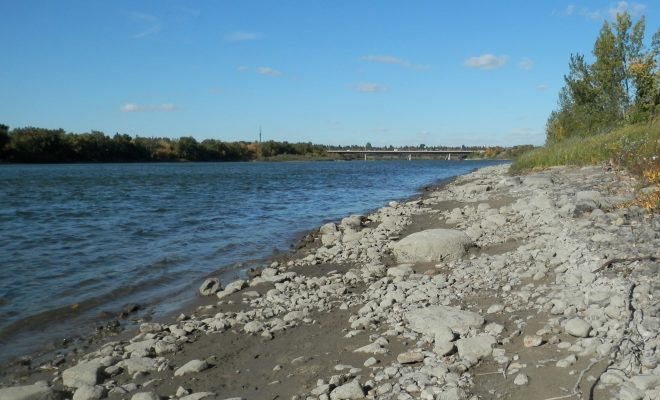 South Saskatchewan River Courtesy of [Ryan Hodnett via Flickr]
South Saskatchewan River Courtesy of [Ryan Hodnett via Flickr]
World
State of Emergency Declared In Canadian Town Due to Oil Spill
If you’re caught using too much water in Prince Albert, Canada, you could be fined up to $1,000. Need to get your car washed or go to the laundry mat? You’re out of luck, they’re all closed. Prince Albert and the surrounding communities in the Canadian province of Saskatchewan are under a state of emergency that was declared Monday following an oil spill on the North Saskatchewan River, the area’s main water source.
Prince Albert city council has declared a local state of emergency due to #huskyoilspill. https://t.co/T8SuMIWD9r pic.twitter.com/mlEMj3sT7T
— 350 Canada (@350Canada) July 26, 2016
The city is coping with the disastrous oil spill by rolling out an emergency waterline that will connect the South Saskatchewan River, the next biggest water source, to Prince Albert and the other communities who are under strict water restrictions. The temporary waterline will extend a little over 18 miles, and will feed clean water into Prince Albert’s water plant by Tuesday evening. On Monday, Mayor Greg Dionne said the waterline was about halfway complete.
“Once we get the [waterline] up and running we’ll be in a different situation,” Dionne said. “There’s enough water delivered on that line to get our plant fully up to capacity and that’s key, because we’ll be able to put everyone back in business.”
So just how bad was the oil spill? About 66,000 gallons of heavy oil and natural gas, enough oil to fill about a tenth of an Olympic-size swimming pool, spilled into the North Saskatchewan River. But that figure is nothing compared to the 2010 BP oil spill where 200 million gallons of oil spilled into the Gulf Coast, enough oil to fill 302 Olympic-size swimming pools.
However, the amount is still enough to cause headaches among city officials who are already expecting complications and problems. Depending on how well Prince Albert residents save water, the city’s reservoir could last anywhere between 48 hours and a week. The city is depending on that reserve of water until the 18-mile temporary waterline is completed. But, it will not be all smooth sailing when the waterline is completed. At about every mile of the waterline, there will be a pump in order to facilitate water flow from the source to Prince Albert. In case there is a problem with that, the city is already exploring secondary water supply options like ponds from private land owners and using the city’s retention ponds.
Globs of oil floating down #NorthSaskRiver #huskyenergy #oilspill #PrinceAlbert #Saskatchewan #WaterIsLife #water pic.twitter.com/YG5RQDTeLn
— Shelley Essaunce (@shelleyshell4) July 26, 2016
It’s unclear when Prince Albert will rely on its primary water source, according to Dionne.
“We could have it up as long as two months. It all depends on the river, how much oil has sunk in the river, where is it pooled, because at the end of the day, we can’t start a water plant up if there’s still pools of oil out there that can damage our plant.”
Authorities have cleaned up about 40 percent of the spill as of Tuesday afternoon. Husky Energy, the company responsible for the spill, and the Canadian government teamed up to create booms to catch more of the leakage. Jeff Da Silva, manager of public works with the city, said consultants have been hired to test the water in the river and the water coming out of the water treatment plant to see if any hydrocarbons are present.
So just how many people are impacted by the spill? Prince Albert has about 35,000 residents, and in the surrounding communities there are about 1,200 rural properties that currently have no water because of the shutdown. A representative from Husky Energy, Al Pate, said the company would try and do everything they could for those affected.
“We’re deeply sorry this has happened,” Pate said. “We accept full responsibility for the event and the cleanup and we will make things right.”
However, since the oil spill happened on Thursday, Husky Energy has yet to send a representative to Prince Albert. But, the CEO of Husky has assured the mayor of Prince Albert that the company will cover all costs incurred by the city because of the spill.
“This waterline alone is costing over $1 million,” Dionne said. “Husky have given us assurances that they’re going to make us whole and that they’re going to fix whatever has to be fixed, and I take them for their word.”
Pate said the cause of the oil leak is unknown, and it may take weeks or even months to understand the causes.
When will we learn?? We continue to live with zero responsibility as if there are no consequences.#huskyoilspill #environmentaljustice
— Khaled خالد (@KhaledAlwaleed) July 26, 2016








Comments